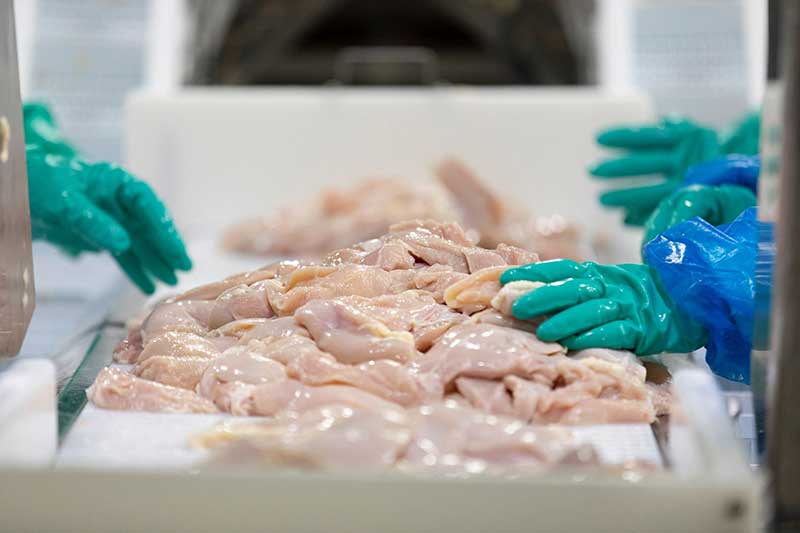By Maria M. Lameiras

Poultry, specifically broiler production, is Georgia’s top livestock agricultural commodity, with an average of 31 million pounds of chicken produced every day throughout the state. At the University of Georgia’s College of Agricultural and Environmental Sciences, experts have helped developed biomapping technology for processing facilities that is making the food supply safer.
Working together with industry partners, Harshavardhan Thippareddi, the John Bekkers Professor in Poultry Science, and Manpreet Singh, department head and professor in the Department of Food Science and Technology, have developed a biomapping tool to help processors identify the areas within processing plants where there is increased likelihood of microbial contamination and a process to reduce those risks.
“Our goal was to provide a guidance document for industry to help them understand their facilities from a food safety viewpoint,” Singh said. “We walk through each processing step in the processing plant to identify sampling locations to recognize potential areas of high risk.”
While data collection in poultry processing plants is not new, the biomapping tool developed by CAES helps processors develop customized evaluation programs for each facility and use the data to better understand risk factors and systematically evaluate processes to improve food safety in processing plants, Thippareddi added.
“We identify sampling sites, why they should sample those areas, how many samples they should take to understand microbial risks, and how to reduce bacterial contamination,” he added.
By identifying “hot spots” within the processing facility, processors can better allocate resources to reduce microbial risk in those areas, through incorporating antimicrobial interventions or optimizing the parameters such as concentration, exposure time or type of antimicrobial to reduce the risk.
“This is where creating a biomapping program can prove more effective, depending on the product being processed,” Singh said, adding that the system is similar to the root cause analysis tool used by regulatory agencies investigating foodborne illness outbreaks.
Using a customized biomapping program for each facility allows processing plant managers to systematically monitor conditions unique to that plant and maintain the microbiological safety of poultry and poultry products.
To develop a biomapping program, it is necessary to determine what needs to be evaluated in each facility and what organisms to look for as an indicator for poultry-related pathogens such as Salmonella or Campylobacter. Based on the data collection results, customized plans can be made to develop corrective actions.
The first step in the process is to develop a process flow diagram for the facility, outlining each sequential step of the production process and identifying which areas are microbial hot spots. Then plant managers can evaluate the effectiveness of antimicrobial interventions and optimize the process for improved microbial control by improving resource utilization and adapting new technologies.
“Poultry processing is a dynamic system that must be continuously monitored to minimize potential pathogens in high-risk areas,” Thippareddi said. The U.S. Department of Agriculture’s Food Safety and Inspection Service is evaluating the poultry production-processing continuum to evaluate locations where control can be put in place to effectively reduce the risk of Salmonella from poultry products.
Salmonella is the No. 1 cause of foodborne illnesses in the U.S., with an estimated 1.35 million infections, 26,500 hospitalizations and 420 deaths per year. When there is a foodborne disease outbreak related to poultry, poultry sales usually go down across the board.
“Chicken is responsible for 15 to 20% of illnesses. Proper application of biomapping, followed by systematic monitoring and preventive actions, can reduce foodborne illnesses related to poultry and ultimately enhance public health,” Singh said. “This can also help producers optimize resources and utilize interventions judiciously to reduce costs, but the main goal is to reduce the incidence of foodborne illness. Food safety economics do not matter if public health is compromised.”
Source : uga.edu